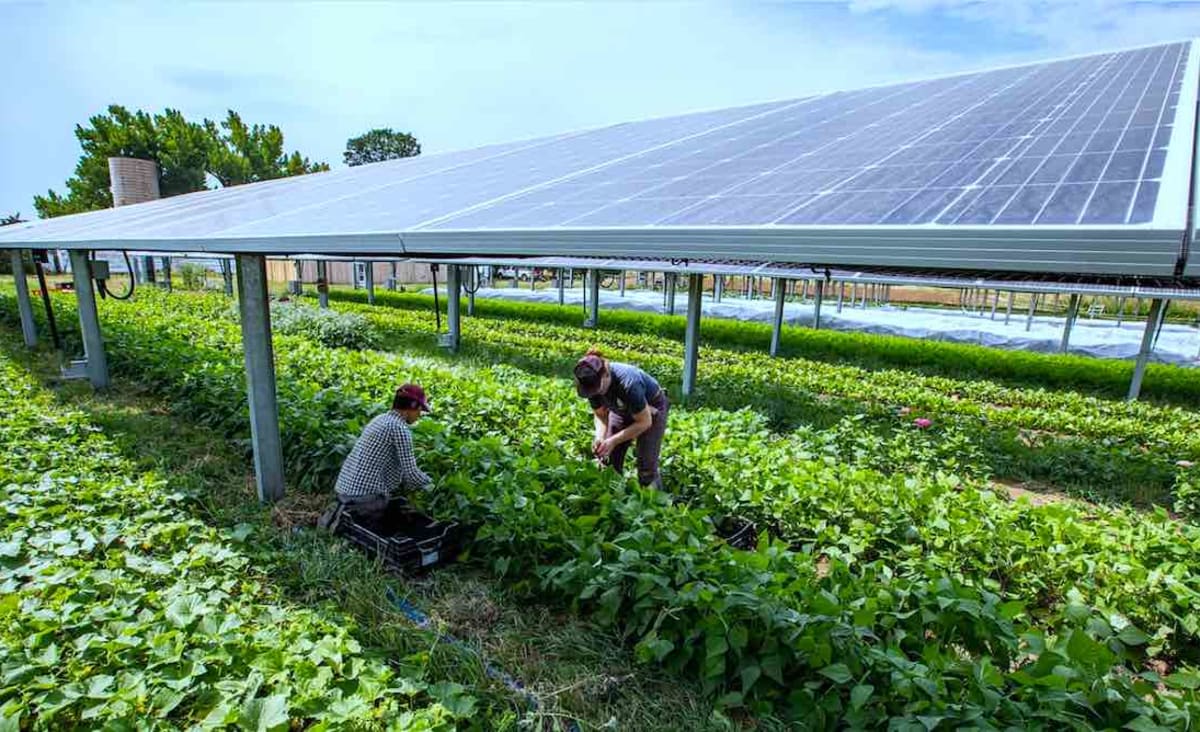
www.goodnewsnetwork.org
Largest Farm to Grow Crops Under Solar Panels Proves to Be a Bumper Crop for Agrivoltaic Land Use
Agrivoltaics, growing crops under solar panels, increases the production of both, and Jack's Solar Garden farm is showing how it's done.
Culture & Entertainment
Agrivoltaics is a field of study that’s blooming with knowledge: how to combine the harvesting of agriculture with solar energy in a way that augments the performance of both.
Exciting researchers, farmers, and solar businesses, alike, is the fact that when planting crops under solar panel arrays, the plants grow better and need less watering, while the panels produce more electricity.
In Boulder, Colorado, visit Jack’s Solar Garden and you will likely see a man driving a tractor under rows of solar panels, with people tending, harvesting, or sowing in the nearby furrows. Jack’s represents a dozen such projects in the US—some commercial and some only for research.
The man on the tractor is Byron Kominek. Following a career in both the Peace Corps and USAID, Kominek is now one of the most innovative farmers in the country. His 24-acre farm which used to harvest only alfalfa and hay was in his family for 50 years, after it was bought by his grandfather Jack, the namesake of the thriving ‘solar garden’.
After taking over the farm, he realized that it was losing money—and the county wasn’t keen on his solar-powered idea.
“They said, ‘land’s for farming, so go farm it,’” Kominek told NPR. “I said, well, we weren’t making any money, you all want to be 100% renewable at some point so how about we work together and sort this out.”
Betting the farm
Together with Boulder city and county, he got permission to build an agrivoltaic solar farm on his historic farmland.
He turned to an expert solar-panel firm, Namaste Solar, to plan and erect 3,200 panels over one of his major paddocks. Even having built all manner of arrays before, it would be a first for Namaste to mount one high above row crops.
Solar Power World reports that Namaste selected sophisticated trackers to follow the sun across the sky, and mounted them according to strategically-measured heights and spacing to allow enough sun to reach the crops below. For each row mounted 8-feet off the ground, providing enough room to drive a tractor under, two were mounted at 6-feet.
Now finished, the electricity Kominek’s farm generates is enough to power 300 private homes, 50 of which are now his energy clients—including the city, and the county. Underneath there are tomatoes, turnips, carrots, squash, beets, lettuce, kale, chard, and peppers.
This success wasn’t obvious, and it required a major leap of faith to reap the rewards.
“We had to put up our farm as collateral as well as the solar array as collateral to the bank,” he told. “If this doesn’t work, we lose the farm.”
























































